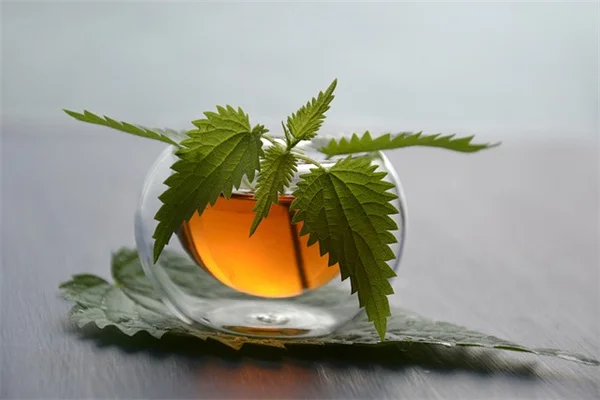How Long Does Dry Pasta Last? Uncovering Shelf Life & Storage Tips
So, does dry pasta expire? The answer is: not really! While dry pasta does have a shelf life, it can last far beyond the date printed on the box if stored properly. Many of us have probably found ourselves wondering about that half-opened box sitting in the back of our pantry—wondering if it's still safe to use. Don't worry, I've been there too! With the right tips and tricks, you can easily tell if your pasta is still good to eat. In this guide, we'll dive into everything you need to know about dry pasta shelf life, how to spot bad pasta, and even some creative uses for older pasta. Buckle up, because we're about to make your pasta game stronger than ever! 🍝
E.g. :How to Determine Cream Cheese Expiration Dates: Your Ultimate Guide
- 1、The Ultimate Guide to Dry Pasta Shelf Life 🍝
- 2、Spotting Bad Pasta Like a Pro 🔍
- 3、Storage Secrets for Maximum Freshness 🏆
- 4、Creative Uses for Older Pasta 🎨
- 5、Pasta Preservation FAQ ❓
- 6、The Final Noodle on the Subject 🍜
- 7、FAQs
The Ultimate Guide to Dry Pasta Shelf Life 🍝
What Exactly is Dry Pasta?
Picture this: you're staring at those colorful boxes in the grocery aisle wondering, "What makes dry pasta different?" Well, let me break it down for you. Dry pasta is essentially durum wheat semolina mixed with water, then dried to perfection. Unlike fresh pasta that needs refrigeration, this pantry hero can sit happily in your cupboard for ages. Pro tip: The drying process removes moisture, creating that signature firm texture we all love in dishes like spaghetti bolognese.
Here's a fun fact that might surprise you - some archaeologists found pasta-like remains in ancient Chinese tombs dating back 4,000 years! While today's dry pasta might not last that long, with proper storage you can definitely count on it through multiple seasons of your favorite cooking shows.
Decoding Pasta Packaging Dates
Ever noticed those confusing dates on pasta boxes? Let's clear that up:
| Date Type | What It Really Means | Should You Panic? |
|---|---|---|
| "Best By" | Peak quality date | No - still safe after |
| "Use By" | Manufacturer's recommendation | Maybe - check first |
| "Sell By" | Store stocking guide | Nope - irrelevant for home use |
I once found a box of rotini that was 18 months past its "best by" date - cooked it up with some garlic butter and nobody noticed a difference! The key is proper storage (more on that later).
Spotting Bad Pasta Like a Pro 🔍
 Photos provided by pixabay
Photos provided by pixabay
The Sniff Test Never Lies
Here's a golden rule my Italian grandmother taught me: good pasta smells like nothing. If you open a package and get hit with a musty, rancid, or just "off" odor, that's nature's way of saying "toss it." I remember one time my roommate insisted on cooking some fettuccine that smelled like an old basement - let's just say our apartment smelled like regret for days!
Other red flags include:
- Discoloration (yellow pasta turning brown)
- Unusual texture (either too soft or brittle)
- Visible mold (green or black spots)
- Mysterious holes (pantry pests love pasta too!)
The Water Test for Doubtful Cases
When in doubt, try this simple trick: drop a few pieces in cold water. Fresh dry pasta should sink slowly. If it floats immediately or behaves strangely, that's your cue to say arrivederci to that batch. I've used this test countless times when cleaning out my college pantry - saved me from many questionable meals!
Did you know? Some pasta shapes are more prone to going bad than others. Thin varieties like angel hair tend to deteriorate faster than sturdy shapes like rigatoni. That's why I always stock up on different types - variety is the spice of life (and pantry emergencies)!
Storage Secrets for Maximum Freshness 🏆
Container Wars: Glass vs Plastic
After years of pasta experiments (and a few bug incidents I'd rather forget), here's my verdict:
Glass jars win for long-term storage - they're airtight, pest-proof, and let you admire your pasta collection. Plastic containers are great for bulk buys but can absorb odors over time. My personal favorite? Repurposed giant pickle jars - they fit a whole pound of pasta perfectly and cost nothing!
Whatever you choose, make sure it has these features:
- Air-tight seal (listen for that satisfying "pop")
- Opaque or kept in dark place (light degrades quality)
- Easy to label (because nobody remembers when they bought that farfalle)
 Photos provided by pixabay
Photos provided by pixabay
The Sniff Test Never Lies
You wouldn't store your fine china in the bathroom, right? Same logic applies to pasta. The perfect spot is:
- Cool (below 70°F)
- Dry (humidity is the enemy)
- Dark (no sunny windowsills)
- Away from strong odors (garlic powder doesn't belong in pasta)
I learned this the hard way when I stored pasta near my coffee grinder - ended up with espresso-flavored penne that even my most adventurous foodie friends wouldn't touch!
Creative Uses for Older Pasta 🎨
Beyond the Basic Boil
So your pasta's past its prime but still edible? Time to get creative! Here are some of my favorite "second life" ideas:
- Pasta crafts - String it for kids' necklaces (non-toxic and fun!)
- Emergency kindling - Dry pasta burns surprisingly well in a pinch
- DIY spa treatment - Crush into a soothing foot scrub
- Science experiments - Teach kids about absorption by dyeing different shapes
Last winter, I used stale bowties to make the most festive Christmas ornaments - sprayed them gold and hung them on my tree. Martha Stewart would've been proud!
The Ultimate Pasta Bake Rescue
When texture is questionable but safety isn't, baked dishes are your best friend. The sauce and cheese work miracles on older pasta. My go-to recipe:
- Cook pasta 2 minutes less than package says
- Mix with jarred marinara (no shame in shortcuts!)
- Layer with whatever cheese is in your fridge
- Bake at 375°F until bubbly
- Top with stale breadcrumbs for crunch
This method saved countless "what's for dinner?" moments in my early twenties. Pro tip: add a splash of pasta water to the sauce - the starch works wonders!
Pasta Preservation FAQ ❓
 Photos provided by pixabay
Photos provided by pixabay
The Sniff Test Never Lies
This might sound crazy, but yes! While unnecessary for short-term storage, freezing can extend shelf life by years. Here's how I do it:
- Portion into meal-sized amounts
- Use freezer bags (remove as much air as possible)
- Label with date and type
- Thaw at room temperature before cooking
I keep a "pasta emergency kit" in my freezer at all times - because you never know when a carb craving will strike at 2 AM!
Does Whole Wheat Pasta Last as Long?
Great question! Whole wheat pasta actually has a shorter shelf life (about 1 year) because the natural oils in the whole grain can go rancid. I learned this when my "healthy" spaghetti dinner turned into a science experiment. Now I follow these rules:
- Buy smaller quantities of whole grain varieties
- Store in the fridge if keeping longer than 6 months
- Always sniff test before cooking
Remember: when in doubt, throw it out. Food poisoning isn't worth saving $1.29 on a box of pasta!
The Final Noodle on the Subject 🍜
My Personal Pasta Philosophy
After years of pasta adventures (both successful and disastrous), here's what I've learned: dry pasta is one of the most forgiving pantry staples out there. With proper storage and a little common sense, you can keep it way beyond those arbitrary dates. Just remember:
- Your nose knows best
- When texture changes, change your recipe approach
- Storage makes all the difference
- There's always a creative solution
Now if you'll excuse me, all this talk about pasta has made me hungry. I think I'll go cook up some of that "expired" linguine in my pantry - with extra garlic and olive oil, of course!
In wrapping up our journey through the world of dry pasta, it's clear that understanding how long it lasts and how to properly store it can make all the difference in your kitchen adventures. We've explored everything from the expiration of dry pasta to practical tips for extending its shelf life. Remember, those dates on the packaging are more about quality than safety. If you've stored your pasta well, there's no need to panic when you find a box that's a bit past its prime. Just use your senses—if it smells fine and looks good, it’s likely still perfectly edible! 🍝
As someone who's navigated through pasta failures and triumphs, I encourage you to embrace your inner pasta chef. Don't hesitate to experiment with that older pasta you have lying around—get creative and try new recipes! And hey, if you have any tips or stories about your own pasta experiences, I'd love to hear them. Drop a comment below or share your thoughts on social media. Let's keep the pasta conversation going! 💬
E.g. :Dried Pasta Safe After Expiration Date? : r/foodsafety
FAQs
How Long Can I Store Dry Pasta?
Dry pasta can last quite a while if stored correctly. Typically, it has a shelf life of 1 to 2 years, but if you keep it in a cool, dry, and dark place, it can last even longer. I once found a box of spaghetti that was over two years old, and it still cooked up perfectly! Just remember to check for any signs of spoilage, like unusual smells or discoloration, before cooking it. Proper storage is key to maximizing its shelf life.
What Should I Do If My Pasta Smells Bad?
If you notice a musty or rancid odor coming from your pasta, it's best to throw it out. Good pasta should smell neutral or have a faint wheat aroma. I learned this the hard way when I cooked some fettuccine that smelled off—let's just say it wasn't a pleasant experience! Trust your nose; if it doesn't smell right, it’s better to be safe than sorry.
Can I Store Pasta in the Freezer?
Absolutely! Freezing dry pasta isn't necessary for short-term storage, but it can significantly extend its shelf life. Just portion it into meal-sized amounts, place it in airtight freezer bags, and label them with the date. Thaw it at room temperature before cooking, and you're good to go! I always keep a stash of frozen pasta for those late-night cravings, because you never know when you'll want to whip up a quick meal.
Is Whole Wheat Pasta Different in Storage?
Yes, whole wheat pasta generally has a shorter shelf life compared to regular dry pasta, mainly due to the natural oils in whole grains that can go rancid. I'd suggest storing it in the fridge if you plan to keep it longer than six months. I once had a box of whole wheat spaghetti that went bad before I could use it—trust me, a sniff test can save you from an unpleasant surprise!
What Are Some Creative Uses for Expired Pasta?
Don’t toss that stale pasta just yet! There are plenty of creative ways to use it. You can make pasta crafts, use it as emergency kindling, or even crush it into a soothing foot scrub. I once turned some old bowties into festive Christmas ornaments, and they turned out great! If the pasta is safe but not great for eating, get creative and find a new life for it!






